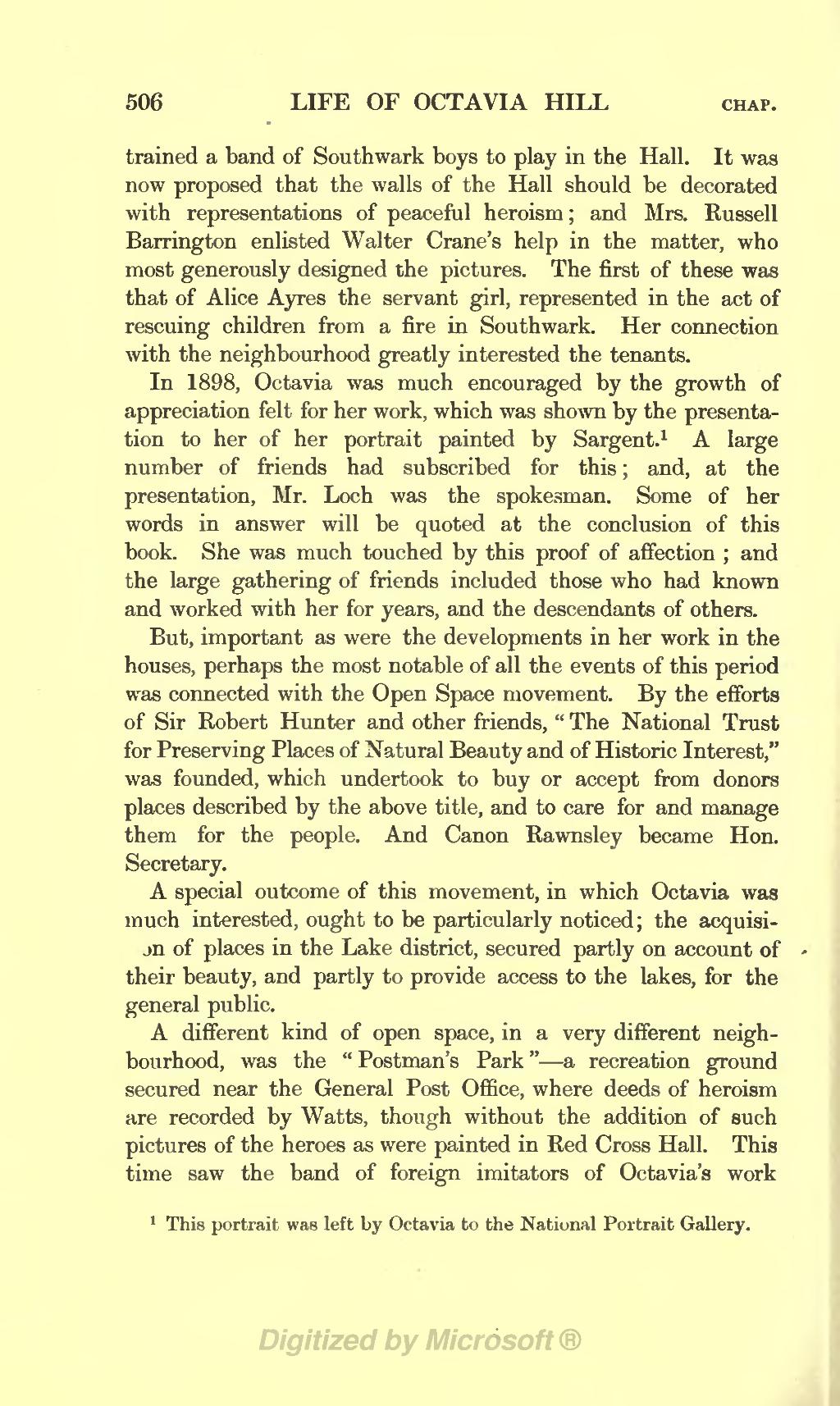trained a band of Southwark boys to play in the Hall. It was now proposed that the walls of the Hall should be decorated with representations of peaceful heroism; and Mrs. Russell Barrington enlisted Walter Crane's help in the matter, who most generously designed the pictures. The first of these was that of Alice Ayres the servant girl, represented in the act of rescuing children from a fire in Southwark. Her connection with the neighbourhood greatly interested the tenants.
In 1898, Octavia was much encouraged by the growth of appreciation felt for her work, which was shown by the presentation to her of her portrait painted by Sargent.[1] A large number of friends had subscribed for this; and, at the presentation, Mr. Loch was the spokesman. Some of her words in answer will be quoted at the conclusion of this book. She was much touched by this proof of affection; and the large gathering of friends included those who had known and worked with her for years, and the descendants of others. But, important as were the developments in her work in the houses, perhaps the most notable of all the events of this period was connected with the Open Space movement. By the efforts of Sir Robert Hunter and other friends, "The National Trust for Preserving Places of Natural Beauty and of Historic Interest," was founded, which undertook to buy or accept from donors places described by the above title, and to care for and manage them for the people. And Canon Rawnsley became Hon. Secretary.
A special outcome of this movement, in which Octavia was much interested, ought to be particularly noticed; the acquision of places in the Lake district, secured partly on account of their beauty, and partly to provide access to the lakes, for the general public.
A different kind of open space, in a very different neighbourhood, was the "Postman's Park" a recreation ground secured near the General Post Office, where deeds of heroism are recorded by Watts, though without the addition of such pictures of the heroes as were painted in Red Cross Hall. This time saw the band of foreign imitators of Octavia's work
- ↑ This portrait was left by Octavia to the National Portrait Gallery.
